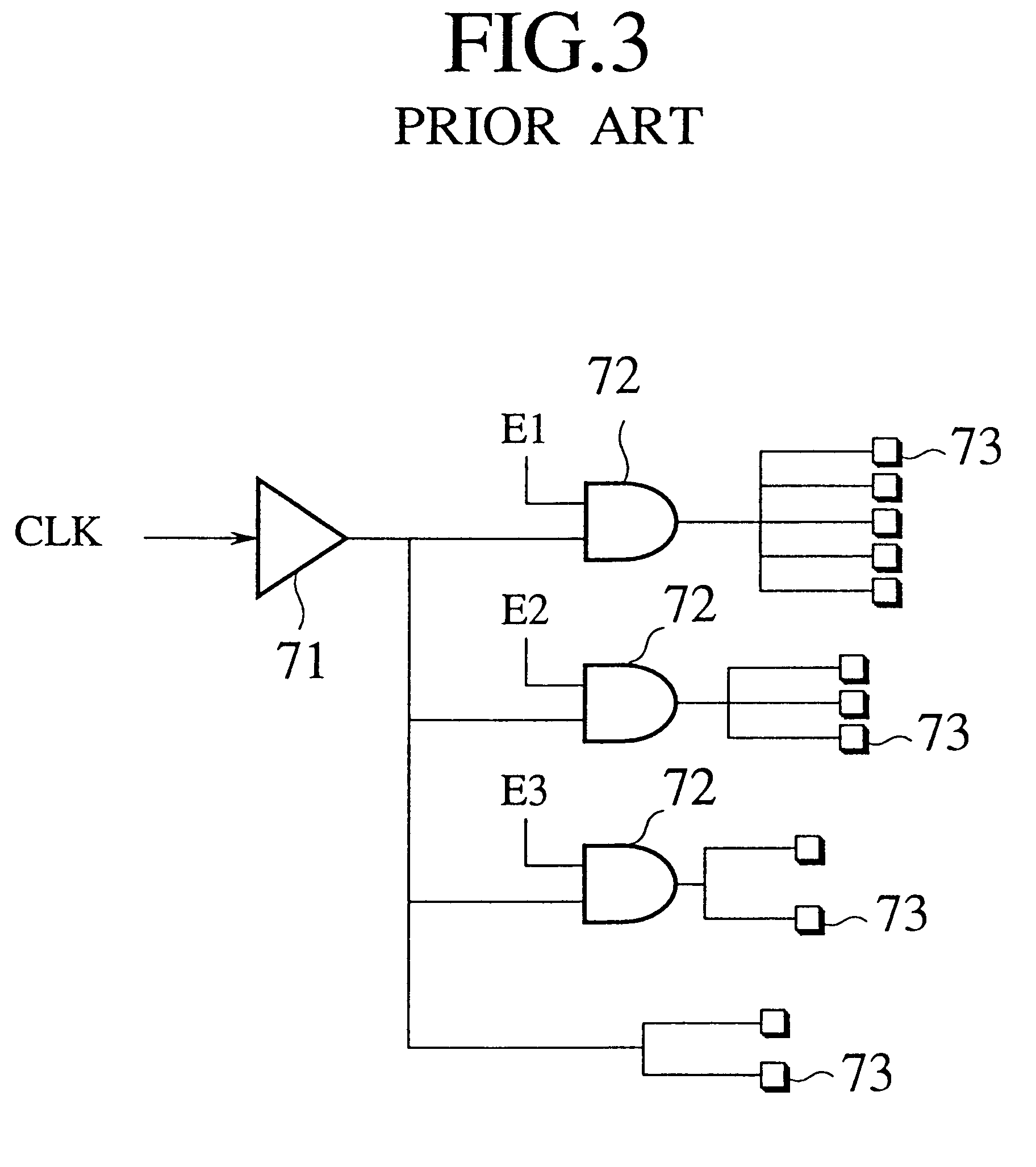Method and apparatus for clock gated logic circuits to reduce electric power consumption
- Summary
- Abstract
- Description
- Claims
- Application Information
AI Technical Summary
Problems solved by technology
Method used
Image
Examples
first embodiment
Referring now to the accompanying drawings, several embodiments of a clock supplying circuit and an enable buffer cell, and a computer aided design system and method for clock gated logic circuits, an enable buffer cell, and a computer program embodied on a computer-readable medium for designing clock gated logic circuits in accordance with the present invention will be explained in details. FIG. 7 is a function block diagram of a computer aided design system for clock gated logic circuits regarding the present invention.
For designing a clock gated layout on a logic circuit, this computer aided design system for clock gated logic circuits comprises a circuit information storing section 1, a non-load condition input section 2, a non-load condition extraction section 3, an enable signal candidate generation section 4 and, an area / delay / electric power analysis section 5, an enable signal candidate information storing section 6, design restriction input section 7, an enable signal selec...
second embodiment
FIG. 17 is a table showing exemplary information of non-load conditions as input through the non-load condition input section 2 in accordance with the present invention.
Explained in this embodiment of the present invention is the case that the non-load conditions as illustrated in FIG. 17 are input through the non-load condition input section 2 in the same configuration as illustrated in FIG. 7 to FIG. 10. In accordance with this embodiment of the present invention in which non-load conditions are additionally input through the non-load condition input section 2, it is possible to take into consideration the non-load conditions which can not be extracted by the non-load condition extraction section 3 and the "don't care" conditions direct1y extracted from the logic circuit, so that more appropriate enable signals can be generated as compared to the first embodiment. Meanwhile, information stored in the circuit information storing section 1 is similar to that as illustrated in FIGS. ...
third embodiment
Hereinbelow, a third embodiment will be explained. Explained in this embodiment of the present invention is the case that, when an enable signal is selected among from the enable signal candidates by the enable signal selection section 8, a user of the system is provided with the enable signal candidate information in the form of a graph or a table on the CRT in order to enable him to select appropriate enable signals in the same configuration as illustrated in FIG. 7 to FIG. 10.
In this embodiment of the present invention, information of the second embodiment as illustrated in FIG. 18 is stored in the enable signal candidate information storing section 6. Namely, a graph as illustrated in FIG. 20 is displayed in the CRT 19 with an ordinate indicative of the electric power consumption reduction and an abscissa indicative of the area as increased by introduction of the respective one of the eight enable signal candidates. The user can select an enable signal by pointing one of the ena...
PUM
 Login to View More
Login to View More Abstract
Description
Claims
Application Information
 Login to View More
Login to View More - R&D
- Intellectual Property
- Life Sciences
- Materials
- Tech Scout
- Unparalleled Data Quality
- Higher Quality Content
- 60% Fewer Hallucinations
Browse by: Latest US Patents, China's latest patents, Technical Efficacy Thesaurus, Application Domain, Technology Topic, Popular Technical Reports.
© 2025 PatSnap. All rights reserved.Legal|Privacy policy|Modern Slavery Act Transparency Statement|Sitemap|About US| Contact US: help@patsnap.com



